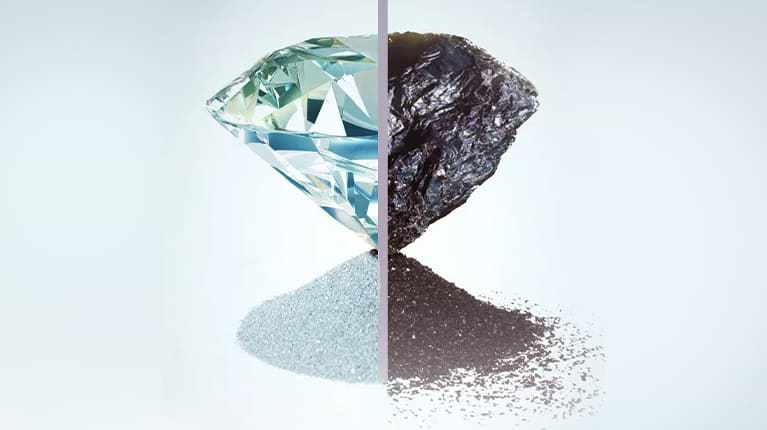The world of diamonds has seen a significant transformation over the years. With advancements in technology, consumers now have more choices than ever before when purchasing diamonds. One of the most debated topics in the jewelry industry today is the difference between mined and lab-grown diamonds. Both types of diamonds have their unique characteristics, but how do they compare? In this article, we will explore the key differences between mined and lab-grown diamonds to help you make an informed decision.
What Are Mined Diamonds?
Mined diamonds, as the name suggests, are naturally occurring gemstones that are extracted from the earth. These diamonds form over millions of years under intense heat and pressure deep within the Earth’s mantle. mined or lab grown diamonds are the traditional form of diamonds that have been valued for their rarity and beauty for centuries. The process of mining involves digging into the earth, often in remote and difficult-to-reach locations, to uncover the diamonds. This labor-intensive process makes mined diamonds more expensive due to the cost of extraction, labor, and transportation.
Mined diamonds are often associated with luxury and status. Because they are rare and formed naturally over long periods of time, they are considered more valuable by some people. However, the mining process has raised concerns due to its environmental impact and ethical considerations. Issues like habitat destruction, pollution, and child labor in certain mining regions have sparked debates about the sustainability of mined diamonds.
What Are Lab-Grown Diamonds?
Lab-grown diamonds, also known as synthetic or man-made diamonds, are created using advanced technological processes that replicate the natural conditions in which diamonds form. There are two primary methods of creating lab-grown diamonds: High Pressure High Temperature (HPHT) and Chemical Vapor Deposition (CVD). Both methods involve recreating the heat and pressure found deep within the Earth, but in a controlled environment.
Unlike mined diamonds, lab-grown diamonds are produced in weeks rather than millions of years. This makes them significantly less expensive than their mined counterparts. Lab-grown diamonds have the same chemical composition, hardness, and physical appearance as natural diamonds. In fact, it can be nearly impossible to distinguish between a mined and a lab-grown diamond without the use of specialized equipment.
One of the biggest advantages of lab-grown diamonds is that they are more environmentally friendly. Since they do not require extensive mining, they contribute far less to environmental degradation. Additionally, the ethical concerns associated with diamond mining are avoided when purchasing a lab-grown diamond. For those who are concerned about the impact of their purchases on the planet and society, lab-grown diamonds offer a viable alternative.
Environmental Impact: Mined vs. Lab-Grown Diamonds
The environmental impact is a significant factor when comparing mined and lab-grown diamonds. Mined diamonds have long been criticized for their detrimental effects on the environment. Diamond mining can result in deforestation, soil erosion, and water pollution. Moreover, mining operations often use large amounts of energy and water, further contributing to environmental degradation.
On the other hand, lab grown diamonds are generally considered more sustainable. Since they are produced in controlled environments, lab-grown diamonds require fewer natural resources. They also produce fewer carbon emissions compared to the extraction of mined diamonds. While energy consumption is still a factor in the creation of lab-grown diamonds, the overall environmental footprint is significantly smaller.
For eco-conscious consumers, choosing lab-grown diamonds may be a more responsible option. These diamonds allow individuals to enjoy the beauty and elegance of diamonds while minimizing their environmental impact.
Ethical Considerations: Mined vs. Lab-Grown Diamonds
The ethical implications of purchasing mined diamonds are an important aspect of the debate between mined and lab-grown diamonds. Mined diamonds have often been associated with exploitative labor practices, including child labor and unsafe working conditions. In some regions, diamond mining operations have been linked to armed conflict and human rights abuses, further complicating the ethical considerations surrounding diamond purchases.
Lab-grown diamonds, in contrast, are produced in a controlled environment, where workers are typically employed under regulated conditions. As a result, lab-grown diamonds are seen as a more ethical option for consumers who want to avoid supporting industries with questionable practices. Moreover, the transparency of the lab-grown diamond industry allows consumers to trace the origin of their diamonds more easily, ensuring that they are not linked to exploitative labor or conflict.
While the diamond industry has made strides toward improving labor practices in recent years, lab-grown diamonds offer a clear ethical advantage by eliminating the potential for human rights violations associated with mining.
Price: Mined vs. Lab-Grown Diamonds
Price is one of the most important factors when deciding between mined and lab-grown diamonds. Mined diamonds are often significantly more expensive due to the costs involved in their extraction. The rarity and natural formation of mined diamonds contribute to their high price tag. Additionally, factors like size, color, and clarity influence the cost of a mined diamond.
In contrast, lab-grown diamonds are much more affordable. Since they are produced in a laboratory setting and do not require the complex and costly process of mining, lab-grown diamonds are typically priced 20-40% lower than mined diamonds of similar size and quality. This price difference makes lab-grown diamonds an attractive option for budget-conscious consumers who still want the elegance and luxury of a diamond without the hefty price tag.
For those on a budget, lab-grown diamonds present an opportunity to purchase a larger or higher-quality diamond for the same price as a smaller or lower-quality mined diamond.
Conclusion: Which Is Right for You?
Choosing between mined and lab-grown diamonds ultimately comes down to personal preference and priorities. Mined diamonds have a long history and are prized for their rarity, but they come with significant environmental and ethical concerns. Lab-grown diamonds, on the other hand, offer a more affordable, environmentally friendly, and ethical alternative without sacrificing beauty or quality.
When making your decision, it is important to weigh factors like environmental impact, ethical considerations, price, and personal values. Both mined and lab-grown diamonds have their merits, but the growing popularity of lab-grown diamonds suggests that more consumers are recognizing the benefits of choosing a diamond that is both beautiful and responsible.




